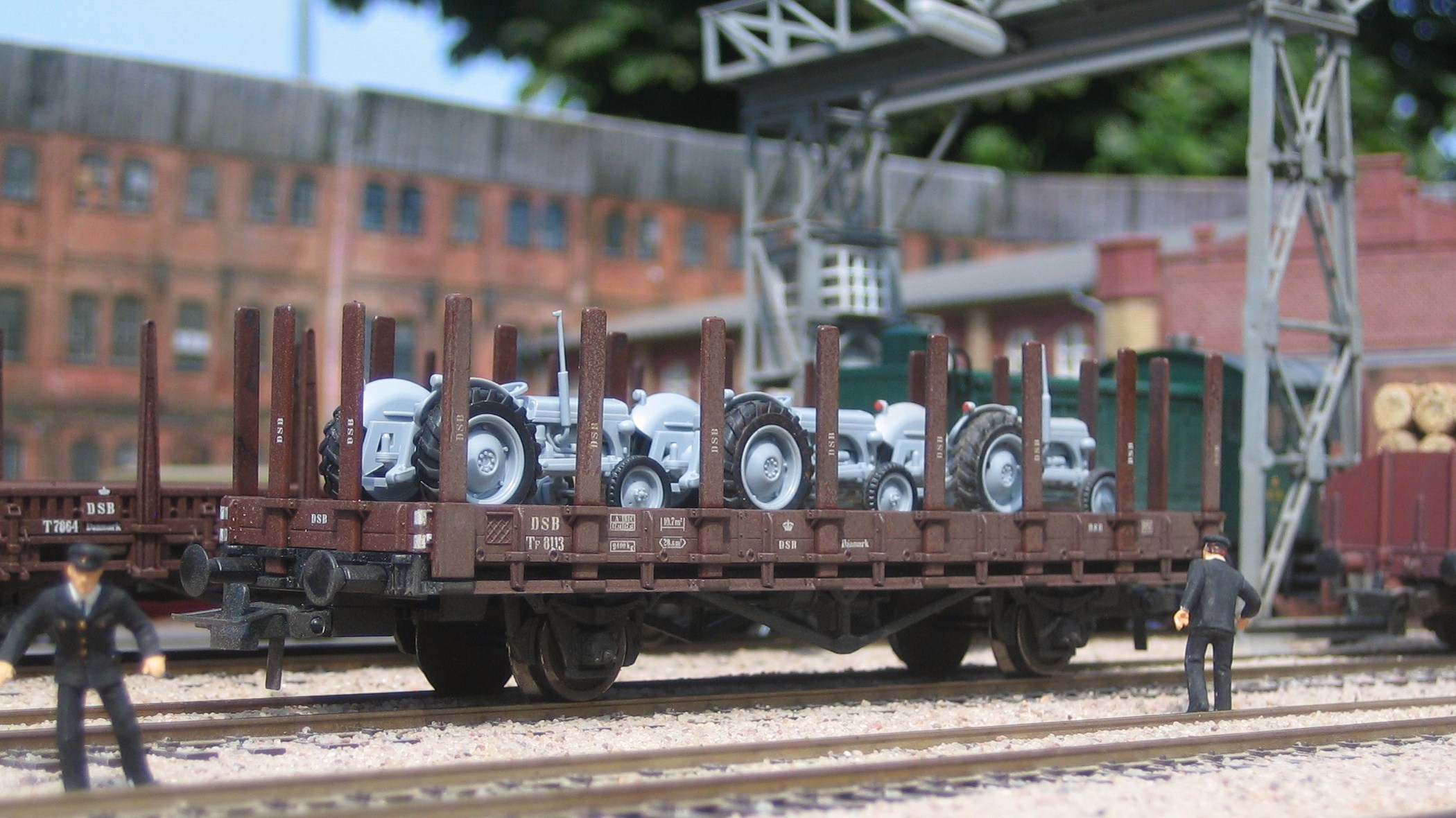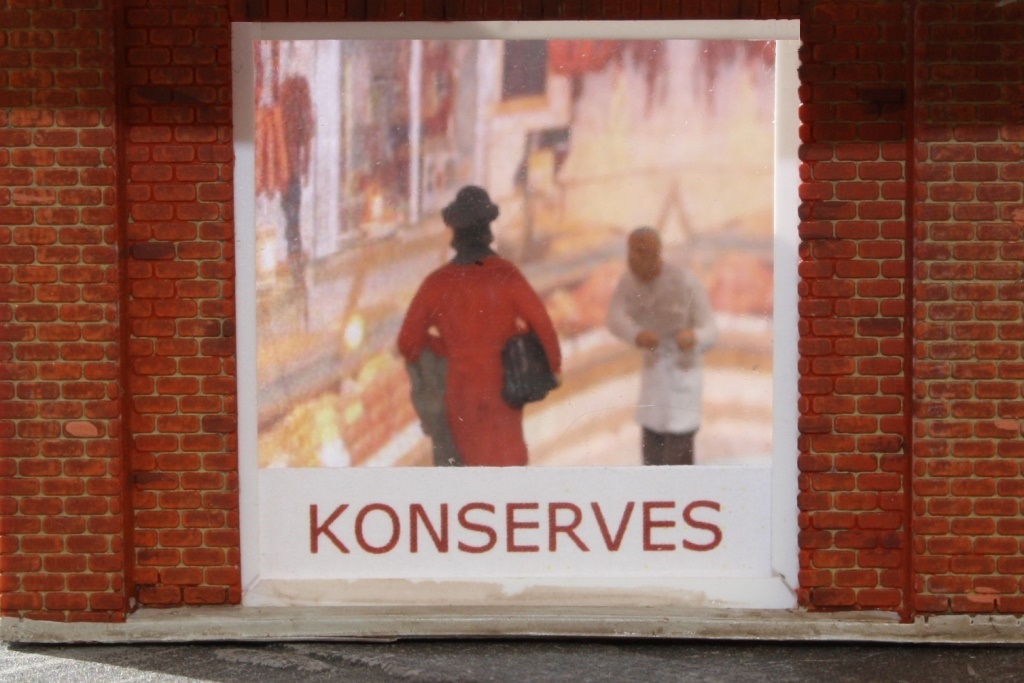This short chapter will give an introduction to Denmark in the mid 1950’s thus providing the general backdrop for the Sundborg MJ model railway.
The economic situation was difficult. Although Denmark came out of WWII and the German occupation with far less damage than most other European countries, the country’s economy was quite strained in the early post-war years. Production equipment in industry and agriculture was essentially obsolete and worn out and substantial new investments were needed.

The railways actually illustrates the challenge of the general economy. in the mid 1950’s. Steam locomotives still formed the backbone of the operations although many of them where overdue for replacement
Industry had outpaced agriculture in its share of the gross national income already in the early 1950s. By 1957 the number of people employed in industry surpassed the number of people employed in agriculture. However, agricultural export was still Denmark’s main source of foreign currency. After an initial burst immediately after the war agricultural export decline again in the 1950s mainly due to the other European countries re-establishing their own agricultural production. The currency shortage made it necessary to restrict imports and retain rationing schemes, which were only gradually being lifted. In the years 1948-1953 Denmark was one of the beneficiaries of the US Government’s European Recovery Programme, better known as the Marshall Plan. It gave the economy a much needed boost, however, it remained difficult to obtain foreign currency for the necessary investments.

The mechanization of the agricultural sector was hugely important to revitalize Denmark’s economy. Here is a load of new Ferguson tractor being delivered to Sundborg
Economic growth was modest in the years 1950 to 1957, with a yearly average of only 2.7 pct. This left Denmark among the poorest economic performers in Western Europe at the time, although the starting point had been quite high compared to other European countries harder hit by the war. Furthermore, economic growth was not evenly distributed among the various sectors. Industrial production accounted for the majority of economic development with small and medium enterprises dominating the business structure. Both agriculture and industry sought to make themselves internationally competitive through productivity gains but neither sectors where entirely successful for the better part of the decade.

Food production is a cross-over sector between agriculture and industry. Sundborg has a large slaughterhouse and meat packing facility with a steadily increasing export
Employment was a problem with an unemployment rate around 10 pct. Throughout the 1950s the government tried to create jobs and stimulate modernisation of the economy by legislation and fiscal promoted investment incentives especially in labour abundant regions. On the upside in 1953 workers got three weeks paid vacation.

Employment was a constant concern both for the individual and society at larger. The traumatic experience of the mass layoffs of the 1930’s depression was vividly remembered
The economic situation changed for the better towards the end of the decade when the upturn in international economy, especially the German Wirtschaftswunder, was finally felt in Denmark ushering in the boom period of the 1960’s. The annual growth rates doubled as did industrial output over the following decade. Unemployment was halved in just two years. Ultimately Denmark leaped forward into the premium league of European economies – but here in the Sundborg era all that is still in the future.

A family car was of course the ultimate proof of economic success
The political situation was stable throughout the 1950’s. After a short transitional government including the old political parties and representatives from the resistance against the German occupation, post-war general elections quickly re-established the political landscape in Denmark. Starting the decade with a liberal/conservative government led by Prime Minister Erik Eriksen from the agrarian party “Venstre”, the Social Democrats came into power in 1953 and remained in office for the next 15 years. Although the Social Democratic Party was the largest party for decades the party never commanded its own majority in parliament and had to seek support from smaller non-socialist parties. The Social Democratic Prime Ministers Hans Hedtoft and H.C. Hansen where both rooted in the traditional labour movement and had from their union days a profound dislike for left wing activists. Thus, despite the social challenges of the day, the Communist Party did not enjoy any parliamentary influence in Denmark in the 1950s.

“Mr. Mayor, sir!” although Sundborg is quite a distance away from the capital local politics follow the general trends. The Mayor is undoubtably a 1950’s style Social Democrat
The modernisation of the constitution in 1953 was one of the main political issues in the early part of the decade. The new constitution abolished the upper chamber of Parliament, confirmed parliamentarism as a state principle and paved the way for female heirs to the throne (important because the then King Frederik IX had no sons, but three popular daughters of which one went on to become Denmark’s present Queen Margrethe II).

Over a couple of generations women began to play a larger and larger role in politics
Foreign and security policy was marked by Denmark’s membership of the United Nations in 1945, Nordic Cooperation and from 1949 membership of NATO. The Cold War meant rearmament of the nation in the 1950s. Denmark did not become member of the EC (present day EU) until 1973.

In the mid-1950’s memories of occupation, liberation and the horrors of WWII was very much alive. International cooperation and security issues were very high on the agenda
The introduction of the welfare society was eagerly debated throughout the decade and in principle widely supported, also by the social liberal and social conservative political parties. However disagreement on the mode of operating the welfare system – a state run system financed by taxes vis-à-vis an expansion of the then existing insurance schemes – held back implementation. And more importantly, so did the economic restraints. The establishment of the now renowned Nordic welfare society did not really happen in Denmark until the following decade, in fact the law on state pensions from 1956 can be highlighted as one of the few successful welfare initiatives prior to 1960.

Old friends. State pensions was introduced in 1956
The public sector employed approx. 8 pct. of the total workforce. At the end of the decade this had risen to just around 10 pct. Today the public sector accounts for around 30 pct. of the workforce.
The level of private consumption was low compared to later times.Especially in the beginning of the decade there was a shortage of certain commodities although rationing was less of a burden in comparison with most other European countries. Throughout the decade consumer goods such as refrigerators, televisions, cars and bigger homes were still very much regarded as luxury items.

Consumerism was still a thing of the future in 1950’s Denmark and most income was spend on accommodation and food
Urbanisation was a strong tendency in the 1950s as Denmark developed from a predominantly agricultural economy into an industrial nation. However, in the mid 1950s out of the total population of 4.5 million people approximately half still lived in the countryside incl. villages and other smaller settlements. The other half lived in the urban areas out of which nearly a million lived in the greater Copenhagen area. Throughout the decade the cities swelled, while the villages shrank. Work and opportunities were in the cities, not least for the many more young people who were getting better and better educated and whose labour force was made redundant in the agricultural sector. Urbanisation and a general population increase gave substantial housing problems in the 1950s.

A house in the suburbs was not within reach for everyone in 1950’s Denmark
Relation between the sexes was much more traditional in the 1950s, the housewife ideal being widely portrayed in popular culture as well as taken for granted in the general political and social debate. Gender equality as a feature often highlighted in today’s depiction of Danish society, was also a thing of the future. Women’s share of the workforce was in both 1950 and 1960 around 29 pct. Only 16 pct. of married women worked outside the home. And the pay was substantially lower than for men. Today women’s share of the workforce is 77 pct., which is more or less the same as for men. Today, girls have surpassed boys in their general level of education by the way, which was far from the case in the 1950’s.

On her way to work – until she gets married
Summing up, 50-60 years ago Denmark was in many respects quite different compared to today’s society. The nation was only slowly recuperating itself from the economic depression of the 1930s and the aftermath of the occupation during the Second World War. Economic growth was sluggish and the transition from agriculture to industry – although irreversible – was slow. For my model railway this provides a backdrop of a somewhat gloomy nature, where the aged steam engines, outdated passenger cars and goods wagons half a century old are asked to soldier on for a few more years. At the same time the brand new diesel engines are marking the arrival of the modern era pulling state of the art steel coaches and long goods trains with all the agricultural and industrial commodities that will ultimately bring the country out of slump and into the future. I guess this is why epoch III is the favourite era for many Danish model railway fans.

Forward to the future!
Below you will find a short presentation film “Introducing Denmark”. The film was produced by NATO in 1956 as part of a series: “Know your Allies”.
Skriv en kommentar